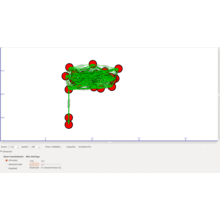Tag Archive: 'ns3 projects'
The outage probability and average bit error rate (BER) of wireless digital systems in a Nakagami-m fading environment have been well analyzed in the literature. Most of the analysis considers static wireless terminals in which the received signal power follows a gamma distribution. However, many mobile and ad-hoc networks (MANETs) comprise of mobile receiving nodes […]
This paper reports experimental results on self-organizing wireless networks carried by small flying robots. Flying ad hoc networks (FANETs) composed of small unmanned aerial vehicles (UAVs) are flexible, inexpensive and fast to deploy. This makes them a very attractive technology for many civilian and military applications. Due to the high mobility of the nodes, maintaining […]
Mobile Opportunistic Network (MON) is characterized by intermittent connectivity where communication largely depends on the mobility pattern of the participating nodes. In MON, a node can take the custody of a packet for a long time and carry it until a new forwarding path has been established, unlike mobile adhoc network (MANET), where a node […]
This paper studies the delay constrained multicast capacity of large scale mobile ad hoc networks (MANETs). We consider a MANET that consists of ns multicast sessions. Each multicast session has one source and p destinations. Each source sends identical information to the p destinations in its multicast session, and the information is required to be delivered to […]
The Virtual Node Layer (VNLayer) is a clusterbased approach to handle communications in mobile ad-hoc networks (MANETs), furnishing an abstraction of fixed geographical regions served by virtual nodes as a means to tackle the challenges raised by the mobility of the physical nodes. Several studies have proved that the VNLayer constructs can be applied to […]

 Click Here to watch our latest output video using NS3 simulator
Click Here to watch our latest output video using NS3 simulator  Click Here to watch our latest projects screenshots using NS3 simulator
Click Here to watch our latest projects screenshots using NS3 simulator